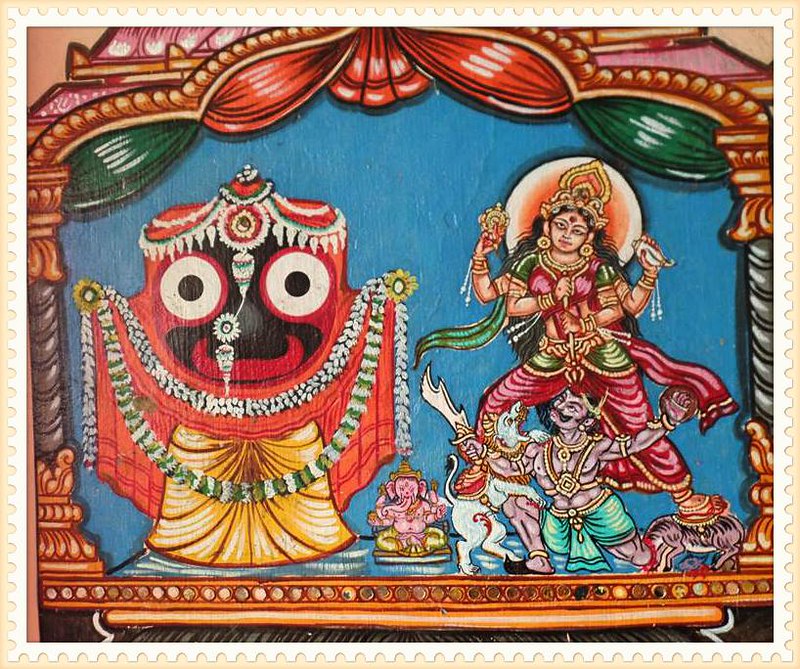Puri: The Holy City Puri, also known as Jagannath Dham is one of the four important Dhams (religious centres) of India. Besides, it is also known as Shreekshetra or the abode of Lakshmi, the spouse of Lord Jagannath. In Odisha, there are other Kshetras like Arka Kshetra (place of Sun), at Konark, Tulsi Kshetra, at Kendrapara (Baldevjew temple), Sabar Shreekshetra –recently developed Jagannath temple of the tribals in Koraput, Saran Shreeskhetra at Marada (Ganjam), Saila Shreekshetra at Angul and Durga-Madhaba Kshetra of Mantridi in South Odisha.
While the devotees are more or less aware of all other Khetras of the state, not too many people know about Durga-Madhaba Kshetra.
According to scholars, the ancient Bhairabi Kshetra was developed as Durga-Madhaba Kshetra towards the end of the 20th century. It is located in the sacred land of Mantridi in Ganjam. Durga-Madhab Kshetra has two important deities. One is Goddess Bhairabi (the fifth incarnation of Durga), and the second one is Jagannath (the Lord of the Universe).
On the other hand, Maa Sri Siddha Bhairabi Kshetra, a Shaktipeeth, located just 18 km from NH-5 near Berhampur town is famous for the cult of Bhairaba-Bhairabi which is believed to have existed since 400 BC. Bhairabi Devi was worshipped as the Boudhatantra Devi. After the gradual disappearance of Buddhism, the Brahma Upasana came into existence so as Madhaba Upasana. This is seen everywhere in Odisha in the form of worship of Radha-Madhaba, Rai-Damodar, Radha-Krishna in the month of Kartik. The Kartika Purana narrates the story of Lord Krishna, Narayan, Lakshmi, demon Jalandhara and Brundabati. Before worshipping the wooden idol of Lord Jagannath, the devotees used to venerate a blue stone. The Utkal Khanda, or the section related to ancient Utkal of Skanda Purana, narrates that a blue stone or Nilakantamani was being worshipped near the Rohini Kunda. It is believed that this blue stone is kept inside the wooden idol of Jagannath as the Brahma. Similarly, the blue stones are also worshipped under the name of Nilamadhab in different parts of Odisha and India.
There is a description about Madhaba in the Markandeya Purana also. Madhaba holds Chakra (wheel) in top right hand, Sankha (conch) in top left hand, Padma (lotus) in bottom left hand and Gada (mace) in the bottom right hand. The history of Madhaba worship in Odisha is traced back to the times of Vaishnavism with its various manifestations of Vishnu. The epithet of Madhaba was adopted by the rulers of Sailodbhava dynasty. Nilamadhaba (here Nila means blue or black signifies nothingness, ‘ma’ means mother relates to creation and Dhaba means the white-the embodiment of all colours) means the Supreme. Legend has it that Jagannath was originally worshipped as a blue stone (Maha Nilamani) idol in the cave of a Blue Mountain (Neela Kandar). Viswavasu, a tribal chief was worshipping this stone, with a purpose to enhance the earth’s fertility and for the wellbeing of all creatures of the world. He used to offer natural flowers and fruits to his God.
Historians are of the opinion that the black or blue stone pieces are the Shalagrams worshipped as the living Vishnu, the Supreme God. Niladri Mahodaya or the thirteenth festival relates to Saptada Murti (Seven God’s images) worshipped on the Ratnabedi of Jagannath temple comprises Jagannath, Balabhadra, Subhadra, Sudarsan, Bhudevi, Sridevi and Madhaba. This signifies that the Madhaba cult and Madhaba of the Bhairabi Kshetra is thus justified after the establishment of Jagannath temple as the unique Durga-Madhaba Kshetra. This apart, Vimala Bhairabi yatra Jagannathstu Bhairab, a verse which is quite popular among the devotees, suggests that Durga-Madhaba Kshetra is certainly one of the prominent abodes of Lord Jagannath.
PNN
